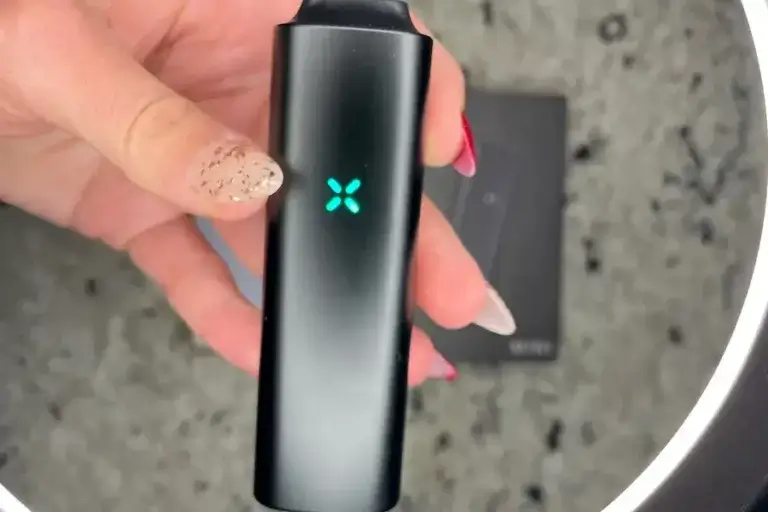As a frequent cannabis user, you may find over time that you require increasing amounts of the substance to achieve your desired effects. This phenomenon, known as tolerance, is quite common among chronic cannabis users. But should this be a concern? To answer this question, we need to delve deeper into the concept of tolerance and how it differs from dependence.
Understanding Tolerance and Dependence: It’s common to encounter confusion between the terms ‘tolerance’ and ‘dependence‘, so it’s crucial to distinguish between the two. According to the American Psychiatric Association, tolerance is characterized as a condition stemming from the persistent use of a drug, which is marked by a significantly diminished effect with regular use of the same drug dose. This can also mean a need to substantially increase the dose over time to achieve the same desired effect. The definition further elaborates that tolerance is one of the two primary indications of physical dependence on a drug, the other being a characteristic withdrawal syndrome.
Applied to cannabis usage, this implies that the user decides if more weed is needed to achieve their desired effects, whether that be for pain relief or a recreational high. However, only abstaining from cannabis can reveal any symptoms of withdrawal and, thus, dependence. While different in essence, tolerance and dependence can be interrelated, as a higher tolerance can potentially indicate a propensity for dependence.
The Effects of Cannabis on the Brain: Our understanding of how drugs, including cannabis, affect the brain has significantly improved since the anti-drug advertisements of the 1980s. Modern research has shed light on the actual impacts on the brain concerning tolerance levels.
Central to this discussion is the endocannabinoid system (ECS). The ECS is instrumental in maintaining the homeostasis or balance of all body systems. It influences virtually all significant bodily functions, including learning, memory, emotions, sleep, temperature, pain, sensation, muscle control, energy balance, mood, motivation/reward, stress, inflammation, immune responses, eating, and arousal.
The ECS doesn’t quite fit into the traditional understanding of an organ system. It’s more apt to think of it as a cellular communication system as it is integrated with and intertwined with all of our other bodily systems, including the lungs, intestines, muscles, and eyes.
CB1 receptors, which are densely packed in the brain, are responsible for multiple crucial functions like memory and reward, as well as the intoxicating effects of THC. With continuous exposure to THC over time, these CB1 receptors start to “downregulate” in heavy users. This means that they decrease their availability on the cell’s surface, thereby reducing its ability to receive certain chemical signals. As a result, with reduced receptor activity, it takes an increasing amount of THC to achieve the same results. This phenomenon has been consistently found in numerous studies exploring the development of THC tolerance, and it is well-established for many drugs.
A study titled “Blunted Highs” describes this desensitization of CB1 receptors, concluding that receptor availability normalized following four weeks of abstinence. However, study results vary on the exact duration it takes for CB1 receptors to reset in different subjects, ranging from a few days to several weeks.
The Concept of Tolerance Breaks: Tolerance breaks, often referred to as “T-breaks,” are periods where a user intentionally abstains from using cannabis. The objective is to allow the CB1 receptors to return to previous levels of sensitivity.
For regular, multiple times per day Type I cannabis product users, developing tolerance to THC is likely. Over time, the doses of THC needed to achieve the same effects can get rather high. This can become a costly and time-consuming endeavor.
The length of time needed for a tolerance reset varies between individuals, and there is scarce evidence to determine the ideal T-break duration. For medical cannabis users, the idea of taking even a single day off can be daunting. A tolerance break, whether for days or weeks, carries implications for your health, as your body has become accustomed to the presence of cannabinoids like THC.
Abrupt cessation of regular cannabis consumption may result in mild withdrawal symptoms. While these can be unpleasant, they are neither dangerous nor life-threatening (unlike with substances such as alcohol, benzodiazepines, or opioids). Typically, these symptoms will resolve within a few days, with lingering effects possibly persisting for a few weeks depending on the level of usage.
Strategies for Keeping Tolerance Low: After a T-break, there are several strategies to delay the build-up of future tolerance. These include:
- Using a lower-strength THC product: A straightforward way to reduce tolerance build-up without feeling like you’re cutting back is to consume a product with a lower THC percentage.
- Decreasing the amount and frequency of consumption: Tolerance is directly correlated with dose and frequency of any medication. Keeping dosing low may be a good way to stave off significant tolerance.
- Using a higher CBD to THC ratio product: CBD and THC can both bind to the CB1 receptors, so adding CBD to your THC products means there’s competition for both cannabinoids to attach to the receptor.
- Taking frequent T-breaks: It’s common for regular cannabis consumers to need at least a couple of tolerance breaks each year. The key to needing fewer tolerance breaks is to adjust the amount of THC and the frequency of consumption to less than before your break.
- Using different strains (or cultivars) and dosage forms: Switching between different products improves tolerance.
- Nurturing the ECS with complementary therapies such as acupuncture and meditation can lower stress. Any complementary practice that reduces physical and mental stress would benefit the ECS receptors due to their intimate interactions with other body systems.
Myths about Tolerance Reduction: Despite popular belief, there’s little to no evidence that certain methods decrease cannabis tolerance. These include mixing weed with tobacco, drinking excess water, vitamins, omega-3, teas, and alcohol.
The good news is that tolerance build-up is generally an issue for people defined as chronic (daily), long-term, high-potency users, and that lowering frequency, potency, and amount of weed can help reset the tolerance threshold for recreational users. Fortunately, any tolerance issues you might be experiencing are temporary. With a proper T-break, your ECS can quickly rebound to its baseline function.
- What is cannabis tolerance and how does it occur?
Cannabis tolerance refers to the body’s decreased response to the effects of marijuana over time, due to regular and frequent use. It occurs due to a mechanism known as “downregulation”. When there is persistent exposure to cannabis, especially to its main psychoactive compound THC, the brain responds by decreasing the number of CB1 receptors – the ones that THC interacts with to produce its effects. Fewer CB1 receptors mean that the same amount of THC will produce lesser effects, leading to users needing to consume more to get the same high. This downregulation process is a common physiological response to many drugs, not just cannabis.
- How is tolerance different from dependence?
While both tolerance and dependence can occur with chronic cannabis use, they are not the same thing. Tolerance refers to needing more of the substance to achieve the desired effect. Dependence, on the other hand, refers to the body’s physiological need for the drug to function normally. People who are dependent on a substance often experience withdrawal symptoms when they try to quit or reduce use. While the two can coexist, a person can develop tolerance without being dependent.
- How does the endocannabinoid system play a role in cannabis tolerance?
The endocannabinoid system (ECS) plays a crucial role in maintaining the body’s balance or homeostasis. It consists of endocannabinoids (internal cannabinoids), receptors for these endocannabinoids, and enzymes that help in the synthesis and degradation of these endocannabinoids. THC from cannabis mimics an endocannabinoid called anandamide and binds to the CB1 receptors, causing the euphoric effects. However, with persistent exposure, the number of CB1 receptors starts to decrease, leading to cannabis tolerance. This is the body’s way of preserving its normal functioning despite the external cannabinoids’ influence.
- What are the signs of cannabis tolerance?
The most obvious sign of cannabis tolerance is the need to use more of the drug to achieve the same effect. Other signs could be reduced intensity of the effects despite using the same quantity, or experiencing lesser effects over the same duration of use.
- How can I reduce my cannabis tolerance?
Taking a “tolerance break”, or a period of intentional abstinence from cannabis, can help reset your tolerance levels. During a tolerance break, your CB1 receptors have the opportunity to return to their previous levels of activity. After the break, consuming lesser amounts of THC, using a product with a higher CBD to THC ratio, or switching between different strains can help keep tolerance from building up again too quickly.
- Is cannabis tolerance harmful?
While cannabis tolerance itself is not inherently harmful, it can lead to increased consumption, which can potentially lead to adverse effects such as cognitive impairment, respiratory problems, dependence, and more. It can also make the drug more costly and time-consuming for the user.
- Is cannabis tolerance permanent?
No, cannabis tolerance is not permanent. Studies show that abstaining from cannabis use can help reset your tolerance levels. However, the length of time it takes for tolerance to reset varies between individuals, and can take anywhere from a few days to several weeks.
- What are the effects of taking a tolerance break?
A tolerance break can lead to withdrawal symptoms in some users. Symptoms can include mood changes, sleep disturbances, changes in appetite, restlessness, and physical discomfort. These symptoms typically resolve within a few days to weeks.
- What are some myths about cannabis tolerance?
Some common misconceptions about cannabis tolerance include the idea that mixing weed with tobacco, drinking excess water, or taking vitamins, omega-3, teas, and alcohol can decrease tolerance. There is no scientific evidence supporting these claims. In fact, some of these methods, like mixing weed with tobacco, can lead to dependence and additional health risks.
- What is the relationship between THC strength and cannabis tolerance?
Higher-strength THC products can lead to a quicker build-up of tolerance since they provide a larger dose of THC to the body with each use. Conversely, using lower-strength THC products can help slow down the build-up of tolerance.
- What role does CBD play in cannabis tolerance?
CBD (Cannabidiol) is another major compound in cannabis but unlike THC, it does not have intoxicating effects. It has been shown that using products with a higher CBD to THC ratio can result in a more moderate effect and thus can help in building less tolerance.
- How does cannabis strain rotation affect tolerance?
Switching between different cannabis strains or cultivars can potentially affect tolerance build-up. Different strains have different combinations and concentrations of cannabinoids, terpenes, and flavonoids, so they might affect your body slightly differently. This variation in effects may help prevent your CB1 receptors from downregulating too quickly.
- Can complementary therapies help with cannabis tolerance?
Complementary therapies that reduce physical and mental stress, like acupuncture and meditation, could potentially help manage cannabis tolerance. Although limited evidence is available on this subject, it is believed that a healthy endocannabinoid system would function more efficiently than an overstimulated one, resulting in better tolerance management.
- Who is more likely to develop cannabis tolerance?
Chronic, long-term, high potency cannabis users are more likely to develop tolerance. This includes people who use cannabis multiple times per day or those who use high-THC products. On the other hand, medical cannabis users who follow strict dosing regimens may have less tolerance issues.
- Can you build a tolerance to CBD like you can with THC?
While THC tolerance is well-documented, the research on CBD tolerance is less clear. Some studies suggest that CBD may not lead to tolerance in the same way that THC does. However, more research is needed to fully understand the potential for CBD tolerance.








